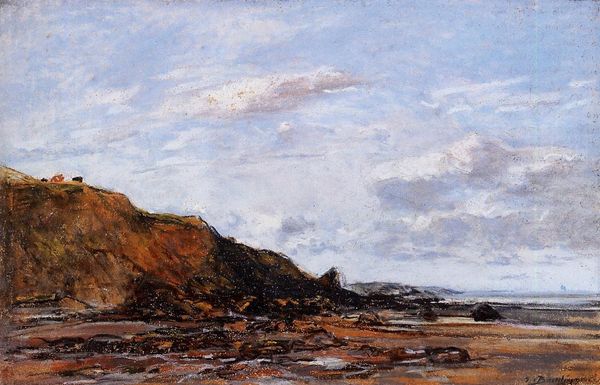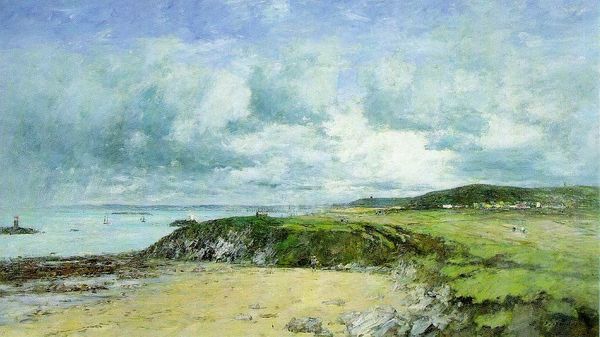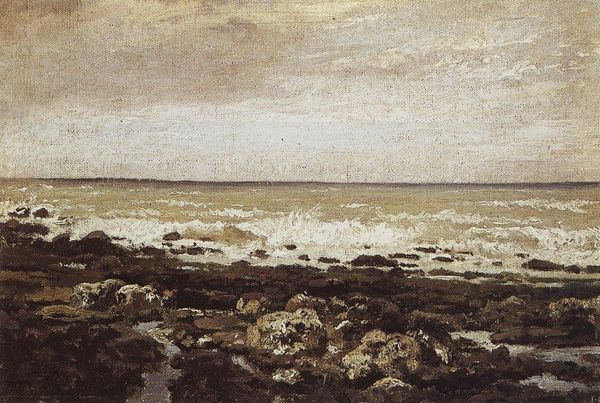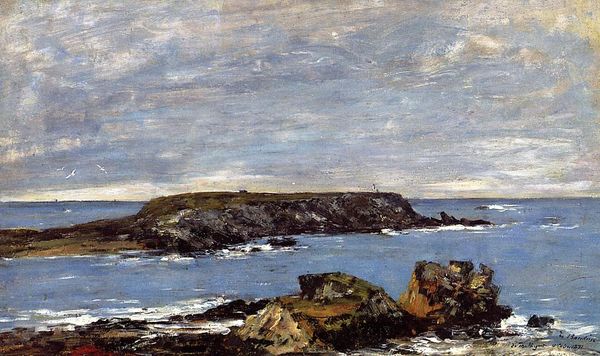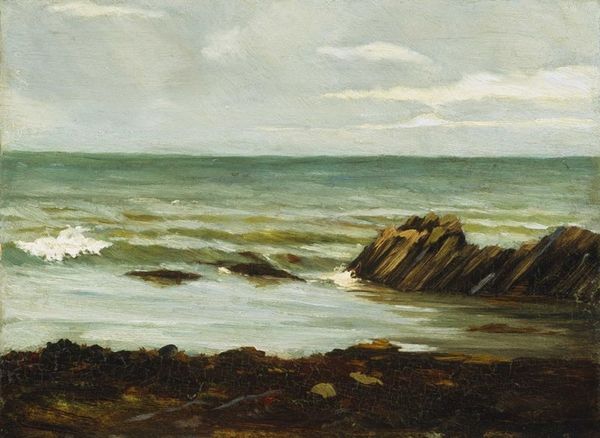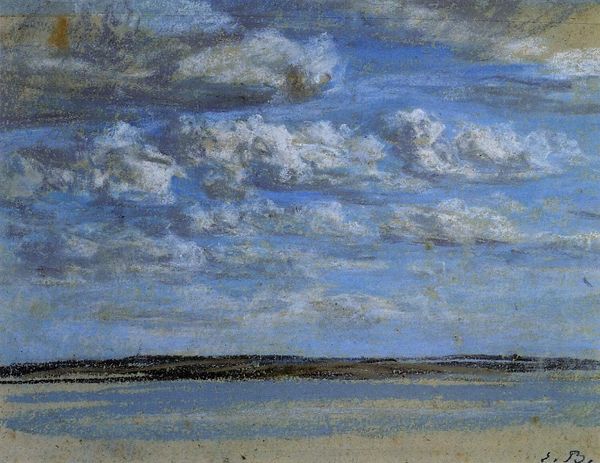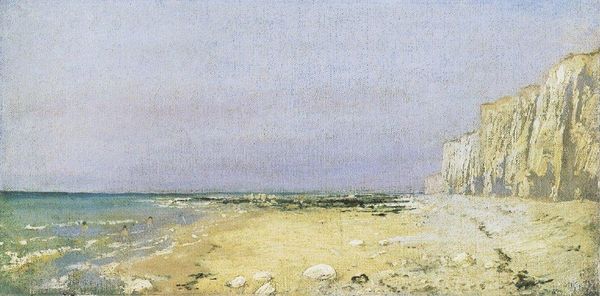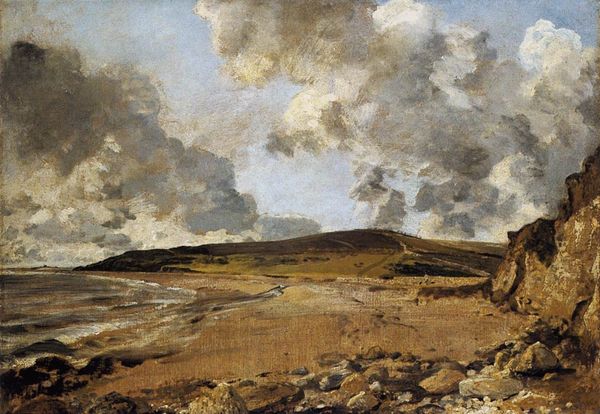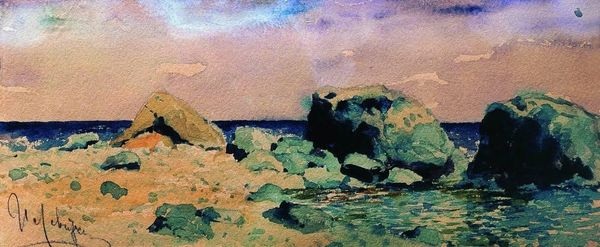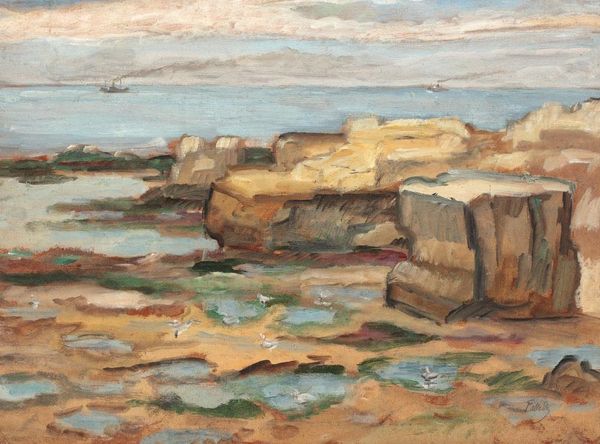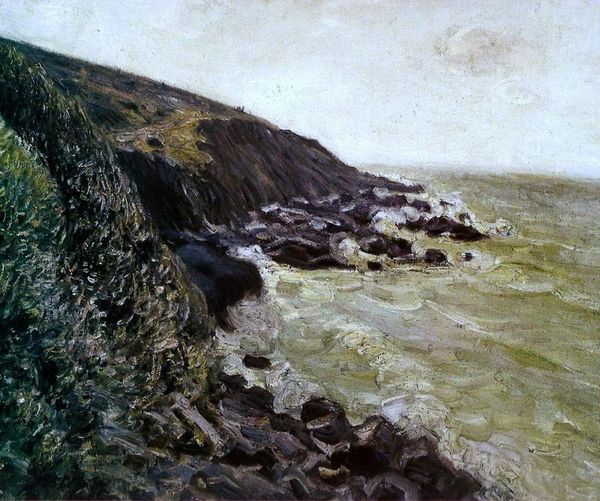
Dimensions: 46 x 76 cm
Copyright: Public domain
Curator: Standing before us is "Trouville, Shore and Rocks" by Eugène Boudin, created in 1862. It’s an oil on canvas, capturing a coastal scene in the plein-air style. Editor: Ah, look at that sky! It's all drama and mood. Makes you want to pull your collar up against the wind. I get a distinct sense of melancholy, like the end of summer is always the best. Curator: Boudin was a pivotal figure, influencing the Impressionists. Consider this scene, situated in Trouville, a site of leisure but also of intense social stratification. The beach wasn't a neutral space. Editor: Totally. You've got those faint figures on the shore, like tiny punctuation marks in a vast sentence about nature. There is something about how they become part of a larger, grand atmospheric dance. Did Boudin meet anyone notable here, like a mistress, perhaps? Curator: Most famously, he met a young Monet in 1858 and encouraged him to paint outdoors, to capture the immediate sensations of light and atmosphere. The painting, of course, reflects evolving class structures of leisure in Normandy. Those vacationing in places like Trouville occupied very specific economic positions of privilege in society at the time. Editor: I love how loose the brushwork is, especially in the sky. It feels almost unfinished, like a memory rather than a detailed depiction, which reminds me of dreams of visiting places I have only imagined or seen in photos. Curator: That "unfinished" quality is key to understanding Impressionism's break from academic painting. They prioritized capturing fleeting moments over polished detail. I think of it as a response to the increasing speed and change of modern life. The ability to "snapshot" an image also made it more appealing, even radical, to attempt a painting on-site. Editor: And it really succeeds, doesn't it? In transporting you. For me it is onto that windy beach; you can almost taste the salt in the air. All that from some skillfully applied paint. Incredible. Thanks for walking me through all that. Curator: Thank you. Considering Boudin's work today, we can consider it not just for its aesthetic qualities, but also as a document of social and artistic change. I think he was deeply influential in visualizing the tensions of his time, don't you think?
Comments
No comments
Be the first to comment and join the conversation on the ultimate creative platform.
